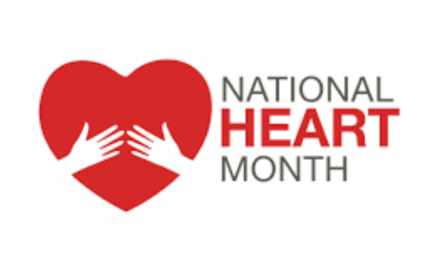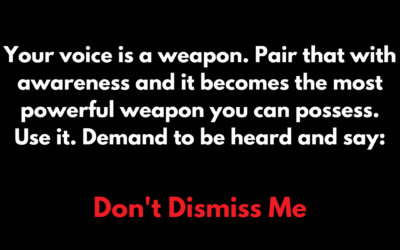Raising Awareness For Heart Health & SCAD!
Empowering people with the knowledge to support their heart health and save lives.
Featured In




Your Heart & SCAD
Cardiovascular disease is the number one cause of maternal mortality in the United States, accounting for over one-third of maternal deaths, with Black women having among the highest maternal mortality rates. Why is childbirth such a risky condition for U.S. women’s health, especially for Black women?
Spontaneous Coronary Artery Dissection (SCAD), is a relatively rare but serious condition that can lead to acute coronary syndrome, heart attacks, and even sudden death. SCAD occurs when a tear forms in the coronary arteries, causing blood to pool between the layers, which may restrict blood flow or even cause the artery to burst.
Whether you are a patient, a loved one, a medical professional, or simply a curious visitor, my aim is to demystify SCAD and equip you with the knowledge you need to effectively navigate this medical journey while raising awareness for cardiovascular health and SCAD.

Real Women Survivors Class of 2022
My Story…
Wakisha (Kisha) Stewart is a wife, mother of three, a nurse, a heart-attack survivor, and a national advocate for heart health dedicated to improving the quality of cardiovascular health care for everyone. Since her heart attack in 2011, she has conducted extensive research about the particular health risks that women face. Wakisha was one of twelve national spokeswomen chosen in 2022 by the American Heart Association to educate the public about the risks of cardiovascular disease. She is a dynamic, nationally recognized speaker on ways to improve heart health through lifestyle changes and a fierce advocate for systemic changes in the health care system to guarantee equity and social justice for all.
+ ABOUT 90% OF SCAD CASES HAPPEN IN WOMEN.
+ ABOUT 25% OF HEART ATTACKS IN WOMEN UNDER 60 ARE SCAD.
+ IN ABOUT 10% OF SCAD CASES, THE ISSUE CAN REOCCUR AGAIN.
Life After A Heart Attack
Life after a heart attack can often signal a turning point in one’s lifestyle, outlook, and priorities. The experience can be profound and, for many, is an important wake-up call to make significant health and lifestyle changes. This period often entails medical intervention, medication adjustments, and potentially cardiac rehabilitation programs to promote a safe recovery and prevent further cardiac events. Diet and exercise also become pivotal, with emphasis on heart-healthy foods and regular physical activity.
Mental support may be necessary as well, as dealing with the emotional impact of a heart attack can be challenging. It’s a period of readjustment, of reevaluating one’s life, and, for many, it can be a time of positive transformation despite the hardship endured. Regular follow-ups with healthcare professionals become crucial to monitor recovery and guide lifestyle adjustments, ensuring the highest possible quality of life post-heart attack.
“No one will fight harder for your life than you.”
– Kisha Stewart
Fight For Your Life
When I say “fight for your life”, it’s not because it’s a dramatic statement to make. It’s because it is the truth. When I had my heart attack, after my husband rushed me to the ER in a panic, the receptionist asked me what was wrong. So I explained to her that I was not feeling right. I told her about being light-headed, feeling foggy and disoriented, vomiting outside my husband’s car while he drove. I told her about the excruciating chest and jaw pain, the numbness down my left arm, all while being breathless. She questioned me, doubted me. Misdiagnosed me as having a panic attack because I was out for the first time since having my baby. But, this was my second baby and I knew myself. I knew my normal. I knew how my body responded to anxiety and this was not it. Then she asked me to wait in the waiting room.
Finally when I was called into triage, I had to explain everything all over again. No one could tell me what was happening and after 2 EKG’s, vomiting, and trying to catch my breath, the ER nurse and tech said that my results were inconclusive. They could not tell me what was happening. Suddenly out of nowhere, a more senior nurse came in and just by looking at me said that I was having a heart attack. If I didn’t stay and insist that something was wrong. I would not be here today. From the time I first felt that sharp pain in my chest, to the time my stent was placed, almost 2 hours had passed. An artery in my heart tore and that caused a 100% blockage, which caused me to have a widowmaker heart attack. Only 1 in 4 people survive that. That’s 25% with medical intervention. I worry about those who doubted themselves and those who listened to others that nothing was wrong. I cannot emphasize enough to please listen to your body and get yourselves checked. It really could be the difference between life or death.
New Book Coming February!
Sonata For A Damaged Heart
SONATA FOR A DAMAGED HEART is one Black woman’s story of a near-death experience following her second pregnancy and the racial disparities in the healthcare industry that contributed to it. The memoir is both a moving, lyrically told story of a decade-long struggle to survive a near-fatal heart attack with dignity and a clarion call for community-wide mobilization to guarantee health care equity.
SONATA FOR A DAMAGED HEART recounts the complicated professional and emotional journey that Kisha takes from heart failure to being selected in 2022 by the American Heart Association (AHA) as one of twelve spokeswomen advocating for women’s heart health in its national education campaign, Reclaim Your Rhythm.
Signs & Symptoms

Heart attacks, also known as myocardial infarctions, present with a variety of symptoms in both men and women. In men, the most commonly reported symptom is chest pain or discomfort, often described as a sensation of pressure, tightness, or squeezing in the center of the chest. This discomfort may radiate to the arms (usually the left arm), the neck, jaw, back, or abdomen. Other signs may include shortness of breath, lightheadedness, nausea, cold sweats, and feeling unusually tired for no apparent reason. Some men may experience these symptoms during physical activity, while others may have them while at rest or even asleep.
On the other hand, while women can also experience the classic symptoms of a heart attack like those seen in men, they are often more likely to report less typical symptoms. These may include shortness of breath, nausea or vomiting, and back or jaw pain. They may also experience an overwhelming sense of anxiety or a feeling of impending doom, unusual fatigue, dizziness, and fainting. Women might have discomfort in the chest, but not always. It’s worth noting that symptoms in women can be subtler and may be overlooked as signs of less serious conditions, like acid reflux or the flu. Thus, both men and women should pay close attention to their bodies and seek immediate medical attention if they experience symptoms that could indicate a heart attack.
Heart Health Tips
Eat Well
1. Plan Your Meals: Planning your meals for the week can help you to eat more nutritiously by ensuring that you have all the ingredients you need to cook healthy meals. It can also prevent last-minute unhealthy choices.
2. Eat a Variety of Foods: Eating a diverse diet ensures that you’re getting a mix of different nutrients. This should include a balance of lean proteins, complex carbohydrates, and healthy fats. Don’t forget to eat plenty of fruits and vegetables, which are rich in essential vitamins and antioxidants.
3. Portion Control: Even healthy food can lead to weight gain if you consume too much of it. Understanding portion sizes can help you maintain a balanced diet. If needed, use measuring cups or a food scale to keep track of your portions until you get a good sense of what appropriate serving sizes look like.
4. Limit Processed Foods: Processed foods often contain high levels of sodium, sugar, and unhealthy fats. Try to focus on whole, unprocessed foods as much as possible. If you do eat processed foods, read the labels to be aware of what you’re consuming.
5. Mindful Eating: Pay attention to what you’re eating and how much you’re eating. Take the time to enjoy your food and listen to your body’s signals. This can help you avoid overeating and make healthier choices about what you eat.
Move Daily
1. Incorporate Activity into Daily Routine: Make physical activity part of your daily life. It doesn’t have to be a full workout session at the gym. Take the stairs instead of the elevator, park further away so you have to walk more, or do some light stretching while watching TV.
2. Find an Exercise You Enjoy: You’re more likely to stick to an exercise routine if it’s something you enjoy. Try different activities until you find one that you love. This could be yoga, dancing, cycling, swimming, hiking, or anything else that gets your body moving.
3. Use a Fitness Tracker: A fitness tracker can motivate you to move more by keeping track of your steps, heart rate, and calories burned. Set goals for yourself and try to achieve them each day.
4. Join a Class or Group: Joining a fitness class or sports club can be a fun way to move your body more. It can also provide a sense of community and accountability, which can help you stay motivated.
5. Break Up Sedentary Time: Prolonged periods of sitting can be harmful to your health. Make a habit of standing up and moving around every 30 minutes when you’re at work or at home. You could do a quick stretch, take a short walk, or do a few jumping jacks to get your blood flowing.
Hydrate Often
1. Always Carry a Water Bottle: Keeping a water bottle with you at all times is a great way to remind yourself to drink water throughout the day. Choose a reusable one to stay environmentally friendly.
2. Infuse Your Water: If you find plain water boring, consider adding a slice of fruit like lemon, lime, or cucumber to give it some flavor. You can also try adding fresh herbs like mint. This can make drinking water more enjoyable, helping you drink more.
3. Eat Hydrating Foods: Many fruits and vegetables have high water content. Foods like cucumbers, watermelon, strawberries, and tomatoes can contribute to your daily water intake.
4. Set Hydration Goals: Keep track of your water intake and aim to drink at least eight 8-ounce glasses of water per day, which is about 2 liters, or half a gallon. This is often referred to as the “8×8 rule” and is easy to remember.
5. Drink Before You Feel Thirsty: Thirst isn’t always an accurate indicator of your body’s hydration needs. Make it a habit to sip water throughout the day, not just when you’re feeling thirsty. This will help ensure that your body is consistently well-hydrated.
Sleep More
1. Establish a Sleep Schedule: Your body has a natural circadian rhythm that thrives on regularity. Try to go to bed and wake up at the same time every day, even on weekends, to keep your internal clock consistent.
2. Create a Sleep-Friendly Environment: Make your bedroom conducive to sleep. It should be dark, quiet, and cool. Consider using earplugs, an eye mask, or a white noise machine if needed. Investing in a comfortable mattress, pillows, and bedding can also make a significant difference.
3. Limit Screen Time Before Bed: The blue light emitted by screens can interfere with your body’s production of melatonin, a hormone that signals your brain it’s time to sleep. Try to turn off all electronic devices at least an hour before bedtime.
4. Mind Your Diet: What you eat and drink can affect your sleep. Try to avoid large meals, caffeine, and alcohol close to bedtime. These can disrupt your sleep cycle and make it hard for you to fall asleep or stay asleep.
5. Develop a Bedtime Routine: Establish a relaxing pre-sleep routine to signal to your body that it’s time to wind down and get ready for sleep. This could involve reading a book, taking a warm bath, meditating, or doing some gentle stretches. Stick to this routine as closely as possible, even on weekends.
Manage Stress
1. Practice Mindfulness: Mindfulness is the act of focusing your attention on the present moment, acknowledging and accepting it without judgment. You can do this by meditating, doing yoga, or even just taking a few minutes to focus on your breath. By doing so, you can reduce anxiety and stress, improve your mood, and gain a new perspective on the situations causing your stress.
2. Healthy Eating and Regular Exercise: A healthy diet and regular exercise can go a long way in managing stress. Physical activity increases the production of endorphins, which are natural mood lifters. It also improves sleep quality, which can be affected by stress. On the other hand, a balanced diet keeps your body healthy and able to handle stress better. Include plenty of fruits, vegetables, lean protein, and whole grains in your diet, and limit your consumption of caffeine and sugar, which can cause energy crashes and increased stress.
3. Prioritize and Organize: Take control of your environment. If your workload is causing stress, try to prioritize your tasks and break them down into manageable chunks. Use time-management techniques like creating a daily schedule or to-do list. Also, keep your personal space organized. A clutter-free space can lead to a clutter-free mind.
4. Limit Alcohol, Caffeine, and Nicotine: These substances won’t help alleviate stress. In fact, they can even exacerbate it. Instead of relying on these, drink plenty of water and herbal teas which can offer a soothing effect.
5. Seek Support: Don’t hesitate to ask for help. Talk to a friend, family member, or a professional counselor about what you’re going through. Sometimes, simply talking about your worries and fears can make them seem less intimidating. You’re not alone in your struggles, and there are always people ready to help. You might also consider joining a support group, where you can connect with others who are facing the same challenges.
Latest News











